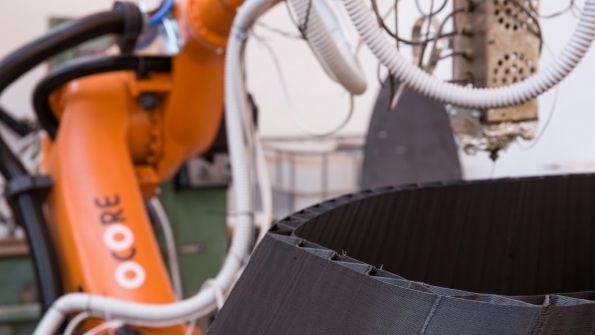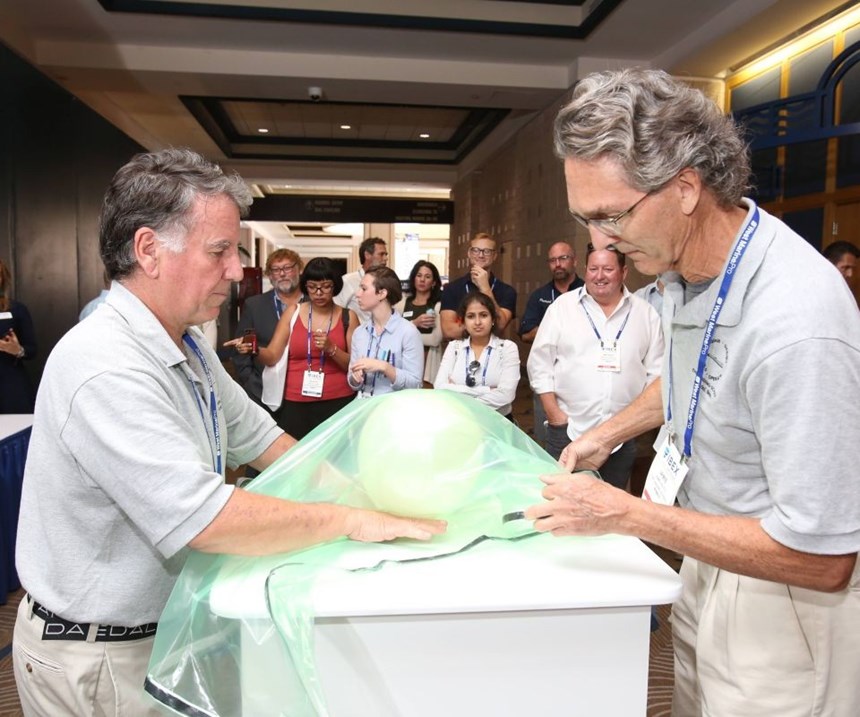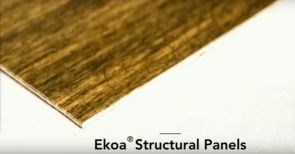IBEX 2018: Growth, 3D printing and thermoplastic composites in the marine industry
Sustainability was the fourth trend, including recycling end-of-life fiberglass boats.
In its seventh year of growth, the marine industry is surging in boat production and new models. This could be seen in the 28th International BoatBuilders’ Exhibition and Conference (IBEX, Oct. 2-4, Tampa, FL, US), which posted a 23% increase in attendees to reach 4,300 and a 14% increase in exhibitors, totaling 700 different companies. Four International Pavilions — Australia, France, Italy and South Korea — were part of a growing global presence, with 55 countries represented this year.
The heart of IBEX, its Education Conference, also saw growth this year, with seminar sales up 27%. For me, notable topics were 3D printed composite production tooling and thermoplastic composites. Highlights and composites-focused offerings included:
- The IBEX Special Seminar: Designing for Speed, which featured a panel of the industry’s top boat designers and 160 attendees with standing room only;
- 3D Printed Production Tooling presented by Belle Blanding of Composites Consulting Group and Stephen Wu of Xplora Yachts and Alliance MG LLC;
- Labor Efficiency and Vacuum Infusion by Kurt Hopf of Vectorworks;
- Making and Breaking Test Panels by Gougeon Brothers and Composites One;
- Composite Cosmetics: Techniques for Improving Surface Profile by Jeff Wright (Gougeon Brothers Inc.), Eric Heilshorn (3A Composites) and Rick Pauer (Polynt Composites USA);
- Resin Flow Fundamentals by Belle Blanding and Dean Callander, Composites Consulting Group;
- Avoiding Common Composite Repair Mistakes by Reid Fleming (Fleming Marine Composites) and Jeff Reber (Composites One);
- Making Structural Components with Thermoplastics by Darcy Hornberger (PolyOne Advanced Composites).
Professional BoatBuilder magazine, the original founder of IBEX and continued supporter of the annual event, has done a great job covering the latest in 3D printed marine molds and actual boats, including two articles by Dieter Loibner: Just Print it! and Print Yourself a Boat. Also, UMaine just made an announcement about helping boatbuilders deploy 3D printing for molds (see “UMaine Composites Center receives $500,000 to help boat builders ...”).

Dieter Loibner’s article in Professional BoatBuilder magazine takes a closer look at the isogrid structure of a 3D-printed hull-part for Livrea Yacht’s Mini 650.
SOURCE: Ocore and proboat.com.
Future Materials seminar
I helped to present the CompositesWorld Seminar: Future Materials, covering new materials and processing methods, including innovations gathered from my travels, interviews and research. Co-presenter Jeff Wright explained how Gougeon Brothers Inc. seriously considers Life Cycle Analysis (LCA) and sustainability as new resin formulations are explored for its West System, PRO-SET and Entropy brands. He also discussed how continuing to increase sustainability must also be balanced with composite structural performance, processing and supply chain needs. Regarding processing, Wright noted future developments toward achieving higher Tg with lower post-cures. The final Future Materials speaker was Lingrove president Joe Luttwak, who presented a wood replacement, offering the look, feel and lightweight structural performance of old-growth wood but via much more sustainable flax fiber-reinforced bio-thermoplastic composites. Attendees were very interested in Lingrove’s technology for both interiors and structural applications.
Lingrove Ekoa TP materials combine flax fiber and bio-thermoplastic polymer to form lightweight, high-performance composites with the look and feel of wood but with much improved sustainability. SOURCE: Lingrove.
Recycling glass fiber composites
The most impactful seminar that I attended was Developing Sustainable Solutions for End-of-life Fiberglass Boats, presented by Evan Ridley and Wendy Mackie of the Rhode Island Marine Trades Association (RIMTA). A pilot recycling network has been established by RIMTA in collaboration with many other state organizations and government agencies. Modelled after a successful German system, the 2018 Rhode Island Fiberglass Vessel Recycling (RIFVR) project will collect end-of-life boats, drain fluids, remove engines, metals and electronics, and then work with industry partners to shred the fiberglass composite structures. This recyclate will then be trucked to a cement kiln where it will be used as fuel. It may also be combined with composite production waste — e.g., resin-filled vacuum bags, scrap laminate and resin — which increases the BTU content for the energy-intensive cement kilns.
The potential impact of this project is huge, offering the composites industry an opportunity to take a significant leap in closing the loop and achieving zero-landfill manufacturing. The challenge is will the industry come together and support RIMTA in completing this initial prove-out? For example, RIMTA is seeking financial backing but also partners to help with logistics R&D and expansion to other durable waste streams (e.g., composite production waste), as well as further collaboration with cement industry partners. This, then, gives the composites industry a firm step from which to continue forward, refining and expanding across the country and into other markets (e.g., windpower).

Rhode Island Sea Grant and RIMTA have partnered with various organizations and state agencies to launch a pilot program for recycling fiberglass composite boats.
SOURCE: Rhode Island Sea Grant.
“Strain-tuning” gelcoats for different applications
Another highlight was recognition of Structural Composites Inc.’s development work with the 2018 Innovation Award in the Boatbuilding Methods & Materials category for its CoCure Technology used in Interplastic Corporation’s new Advanced Marine Coatings. These coatings offer a 200% increase in impact resistance, with a 70% increase in elongation, offering boatbuilders a tougher, more flexible exterior surface and increased design freedom in the underlying composite structure.
CoCure Technology comprises a unique polyester/polyurethane hybrid, where the urethane content can be varied, providing the ability to “tune” Advanced Marine Coatings for different strain requirements and tailor toughness from rigid to elastomeric. This product line also reportedly provides a 20% decrease in Hazardous Air Pollutant (HAP) content vs. conventional gelcoats. Structural Composites Inc. president Scott Lewit reviewed the technology development work in an IBEX technical seminar, noting that new formulations are in testing for the RV market that offer up to three times the weathering performance of current polyester gel coats. “This is very exciting,” he explains, “because we can improve durability and lightweight existing products while simultaneously opening opportunities for composites in new markets all with a low HAP material!”
 |
 |
Exhibited at IBEX 2018, the 9-m-long explosive ordnance disposal (EOD) Advanced Combatant Craft (left) developed via a US Navy SBIR Phase III project uses new Advanced Marine Coatings based on CoCure Technology to allow hull flexure without coating failures to help mitigate shock. SOURCE: Structural Composites Inc.
IBEX 2019 is scheduled for October 1-3 at the Tampa Convention Center, where the show will remain for the next three years. For more information, visit www.ibexshow.com.
Related Content
Novel dry tape for liquid molded composites
MTorres seeks to enable next-gen aircraft and open new markets for composites with low-cost, high-permeability tapes and versatile, high-speed production lines.
Read MoreOne-shot manufacture of 3D knitted hybrid thermoplastic composite structures
MAPICC 3D project replaces steel seat support in heavy-duty vehicle with a 3D knitted composite made from thermoplastic hybrid yarns comprising the matrix and reinforcing components.
Read MoreJeep all-composite roof receivers achieve steel performance at low mass
Ultrashort carbon fiber/PPA replaces steel on rooftop brackets to hold Jeep soft tops, hardtops.
Read MorePrice, performance, protection: EV battery enclosures, Part 1
Composite technologies are growing in use as suppliers continue efforts to meet more demanding requirements for EV battery enclosures.
Read MoreRead Next
CW’s 2024 Top Shops survey offers new approach to benchmarking
Respondents that complete the survey by April 30, 2024, have the chance to be recognized as an honoree.
Read MoreComposites end markets: Energy (2024)
Composites are used widely in oil/gas, wind and other renewable energy applications. Despite market challenges, growth potential and innovation for composites continue.
Read MoreFrom the CW Archives: The tale of the thermoplastic cryotank
In 2006, guest columnist Bob Hartunian related the story of his efforts two decades prior, while at McDonnell Douglas, to develop a thermoplastic composite crytank for hydrogen storage. He learned a lot of lessons.
Read More























.jpg;maxWidth=300;quality=90)








